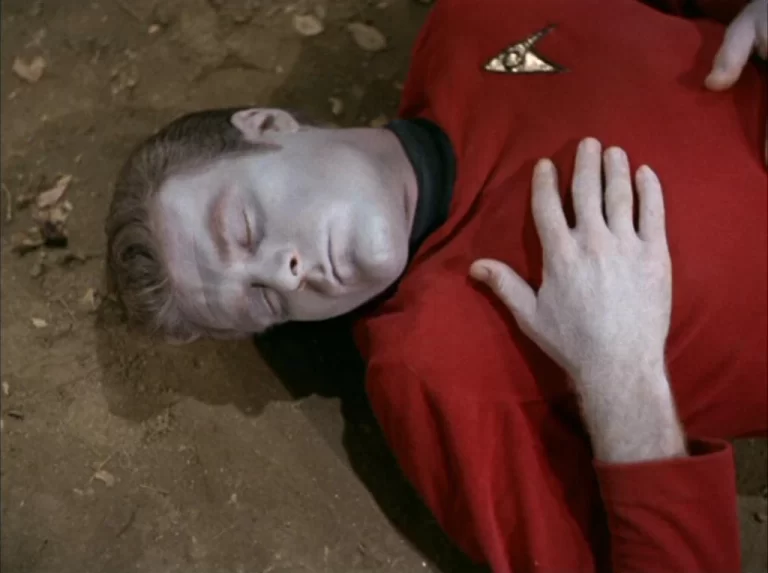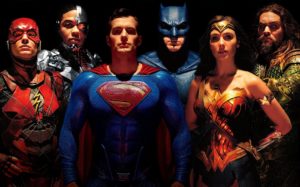(Originally posted on
Unless you’re a comic book geek, you’re probably unfamiliar with the Legion of Super-Heroes and the Great Darkness Saga. The LSH has been around for decades, but never got the exposure of the Justice League or Teen Titans. Plus, with its roots deep in Silver Age lore, it has definitely had some goofy elements. The team first appeared in Adventure Comics with Superboy, and was, well . . . corny. Fun, but corny. The LSH were a superhero group in the 30th century of the DC Universe, with members from every corner of the galaxy, and power levels varying wildly from Duo Damsel (who could turn into two women) to Mon-El (who could punch holes through planets.)
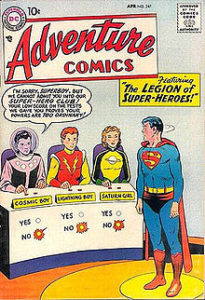
Anyway, years went by and comic buyers got a bit more sophisticated. The Legion got its own title in the early seventies with a rotating roster of writers, including Paul Levitz, Gerry Conway and Roy Thomas. Dave Cockrum and Mike Grell did much of the penciling work and it typically looked pretty sharp. Overall, it looked solid, but the stories tended to be the same, bland fare. Not bad, but not outstanding, either.
Then in the early 1980s, Paul Levitz returned to the writing chores. He brought with him the art team of Keith Giffen and Larry Mahlstedt. I loved this art team from the very beginning, and the story line took a sudden spike in sophistication and maturity. It really kicked into high gear when Paul started The Great Darkness Saga. It involved the appearance of the Jack Kirby uber-villain, Darkseid, in the far future. He returns without any New Gods to stop him and does a respectable try at conquering the galaxy.
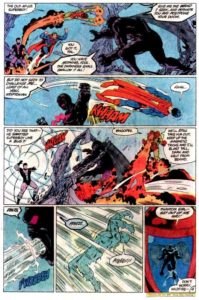
A couple of notes here.
First, for you younger folks, most comic companies weren’t in the habit of having big, apocalyptic, multi-part story lines at the time. There were occasional long plot lines, but they were few and far between. And rarely did anything of true substance happen, especially with DC Comics. Moreover, the general tone and plot lines tended to be fairly straightforward.
Then along comes The Great Darkness. For those of you who read it after it had been collected in a trade paperback, you’re actually missing a pretty big element of the series: mystery. Levitz didn’t just come out and say: “Hey, here comes Darkseid!” Nope. Through most of it, you have no idea who this Big Bad is. Sure, Levitz threw in lots of hints, but they weren’t super-obvious, especially if you didn’t know your New Gods lore. You just knew that things were gettin’ real when the flunkies beat the crap out of the toughest Legionnaires with ease!
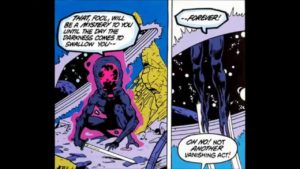
As the story progressed, you found out that the mysterious, inhuman bad guys were “unliving clones” (yes, I’m also not sure what the means–but it’s cool) of some of the most powerful members of the DC Universe, including Superman and a Guardian of OA. They were badass.
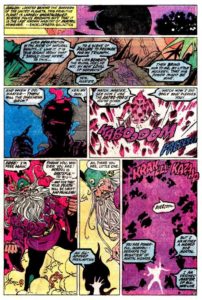
Mordru had beaten the whole Legion before. This is a ‘spit take’ moment.
Then when the mysterious master showed up, he proceeded to stomp the Legion’s most powerful enemies with ease and steal their powers. The stakes just kept going up and the Legion got beaten time and time again before they’d even seen the “master”. I remember geeking out when I found out (although I had suspected) that the master was Darkseid. The Big Reveal was sweet. And Darkseid’s master plan was . . . well, one of the better ones I’ve seen a Evil Mastermind come up with. When I saw it in action, my response was: “How in the hell are they going to win this?!” Seriously. Good plan.
I don’t want to spoil too many of the surprises. I wish everyone could read this without knowing it was Darkseid. So good. I will say the virtually every hero who had every had an appearance in the LSH shows up–and the LSH is still outpowered a thousand-to-one.
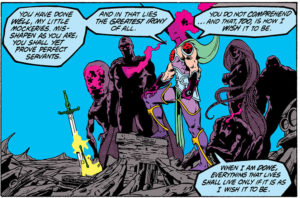
Anyway, let me also rain down praise on the art team of Keith Giffen and Larry Mahstedt. I had encountered Giffen before in the pages of Marvel’s Defenders, but he really comes into his own in this. When he first started, he looked very much like a Jack Kirby clone (which, if you have to be a clone, isn’t too shabby) but he defines his own style in LSH. I also must wonder how much of the plotting he helped with, as he’s a pretty good writer on his own. I must confess I like this period in his artwork the best. Later he did a much looser style that I liked, but it didn’t feel was as good. I do adore all of his Ambush Bug work, though. (For those who don’t know, Ambush Bug was Deadpool before there was a Deadpool.)
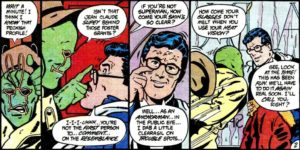
If DC wanted a property to do another animated adaptation of, they could do much worse than The Great Darkness Saga.
Go pick up a copy of the trade paperback and revel in the goodness.

